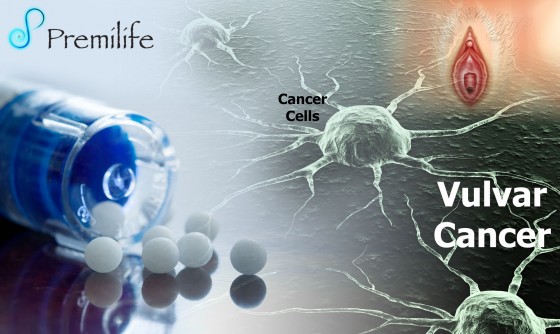Female Reproductive System
Vulvar Cancer

Vulvar cancer is a rare disease in which malignant (cancer) cells form in the tissues of the vulva.
Vulvar cancer is a rare disease in which malignant (cancer) cells form in the tissues of the vulva.
Vulvar cancer forms in a woman’s external genitalia. The vulva includes:
• Inner and outer lips of the vagina.
• Clitoris (sensitive tissue between the lips).
• Opening of the vagina and its glands.
• Mons pubis (the rounded area in front of the pubic bones that becomes covered with hair at puberty).
• Perineum (the area between the vulva and the anus).
Vulvar cancer most often affects the outer vaginal lips. Less often, cancer affects the inner vaginal lips, clitoris, or vaginal glands.
Vulvar cancer usually forms slowly over a number of years. Abnormal cells can grow on the surface of the vulvar skin for a long time. This condition is called vulvar intraepithelial neoplasia (VIN). Because it is possible for VIN to become vulvar cancer, it is very important to get treatment. Having vulvar intraepithelial neoplasia or HPV infection can affect the risk of vulvar cancer.
Anything that increases your risk of getting a disease is called a risk factor. Having a risk factor does not mean that you will get cancer; not having risk factors doesn’t mean that you will not get cancer. Talk with your doctor if you think you may be at risk. Risk factors for vulvar cancer include the following:
• Having vulvar intraepithelial neoplasia (VIN).
• Having human papillomavirus (HPV) infection.
• Having a history of genital warts.
Other possible risk factors include the following:
• Having many sexual partners.
• Having first sexual intercourse at a young age.
• Having a history of abnormal Pap tests (Pap smears).
Possible signs of vulvar cancer include bleeding or itching. Vulvar cancer often does not cause early symptoms. When symptoms occur, they may be caused by vulvar cancer or by other conditions. Check with your doctor if you have any of the following problems:
• A lump or growth on the vulva.
• Changes in the vulvar skin, such as color changes or growths that look like a wart or ulcer.
• Itching in the vulvar area, that does not go away.
• Bleeding not related to menstruation (periods).
Tenderness in the vulvar area. Source : National Cancer Institute


